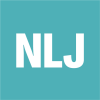Employee-driven Innovation in Welfare Services
DOI:
https://doi.org/10.19154/njwls.v4i2.3869Abstract
There is a growing interest in both employee-driven innovation (EDI) and innovation in welfare services, but a lack of empirical studies addressing innovation from the employee perspective. Accordingly, this study was designed to contribute with well-grounded empirical knowledge, aiming to explore the barriers to and opportunities for participation in innovation experienced by employees of the Swedish welfare services. In order to reach the aim, a qualitative thematic analysis of 27 semi-structured interviews with employees in four municipalities was performed. The study identified three main themes, with a great impact on the innovative performance of the studied organizations: support, including leadership and innovation processes; development, including creativity and learning; and organizational culture, which includes attitudes and communication, all essential ingredients in EDI. Experienced barriers for innovation were unclear or non-existing innovation processes with ambiguous goals, insufficient learning, and deficient organizational slack, thus creating a tension between day-to-day work and innovation and hindering reflection and exploration. Attitudes of colleagues and lack of communication were also barriers to implementing innovation, suggesting the need for better management support for a communicative and open culture. Opportunities were found, including commitment to innovation and willingness to try new ideas, but the employees must be given the mandate and sufficient time to develop the potential that emerges from continuous learning, time for reflection, and user dialogue. The conclusion was that incremental innovations existed, but the full potential of these did not benefit the entire organization due to inadequate communication and lack of innovation processes. The study improves our understanding of how employees regard their involvement in innovation. It also discusses how to make better use of employees’ resources in innovation processes and contributes to important knowledge about EDI in the public sector. On the basis of our results, we suggest a model of EDI for use in practice.Downloads
Published
How to Cite
Issue
Section
License
The Copyright Holder of this Journal is the authors and the Journal. Normally the journal use the CC-BY NC-ND 4.0 licence.
Exceptions to the license terms may be granted
If you want to use content in the Journal in another way then described by this license, you must contact the licensor and ask for permission. Contact Annica Asp at annica.asp@kau.se. Exceptions are always given for specific purposes and specific content only.
Sherpa/Romeo
The Journal is listed as a blue journal in Sherpa/Romeo, meaning that the author can archive post-print ((ie final draft post-refereeing) and author can archive publisher's version/PDF.
Copyright of others
Authors are responsible for obtaining permission from copyright holders for reproducing any illustrations, tables, figures or lengthy quotations previously published elsewhere.
Archives policy
All published material is archived at the Danish Royal Library in conformity with the Danish rules of legal deposit.
Plagiarism screening
We do not screen articles for plagiarism. It is the responsibility of the authors to make sure they do not plagiate.



